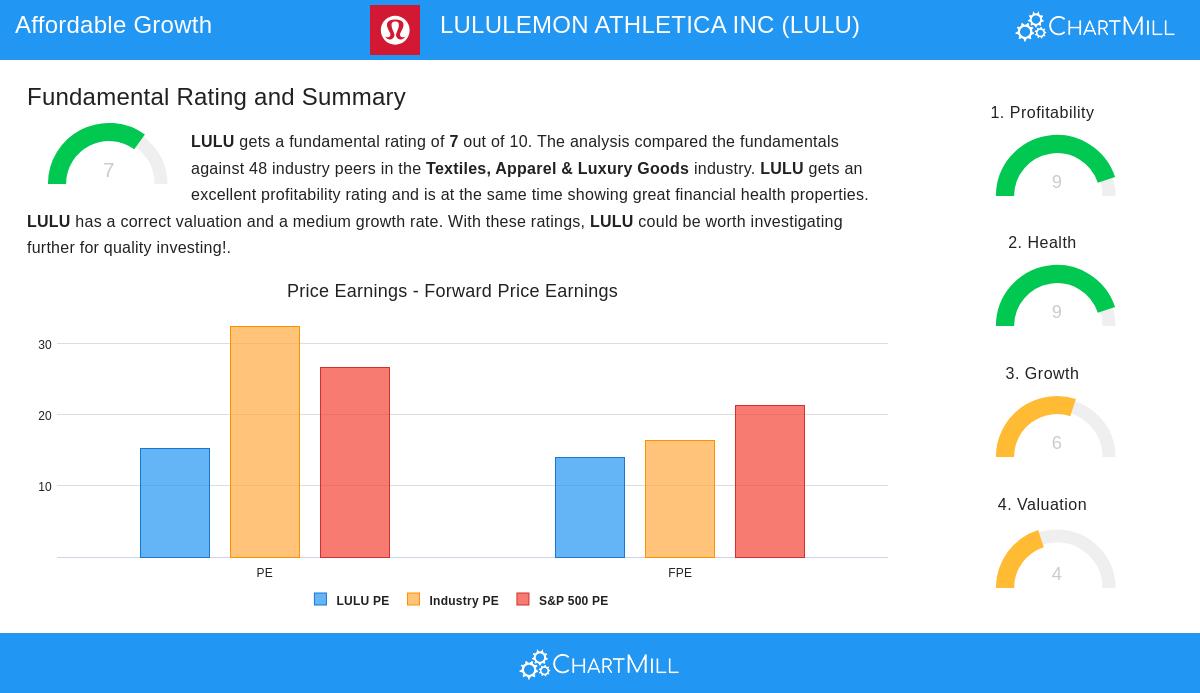LULULEMON ATHLETICA INC (NASDAQ:LULU) - A Strong Candidate for GARP Investors
By Mill Chart
Last update: Jun 24, 2025
LULULEMON ATHLETICA INC (NASDAQ:LULU) stands out as a compelling pick for investors seeking long-term growth at a reasonable price (GARP). The company meets key criteria from Peter Lynch’s investment strategy, combining solid growth, strong profitability, and a reasonable valuation. Below, we examine why LULU fits this approach.

Growth and Valuation
- EPS Growth (5Y): 24.4% – LULU has delivered consistent earnings growth, well above the 15% minimum threshold in Lynch’s strategy.
- PEG Ratio (5Y): 0.63 – A PEG below 1 suggests the stock is reasonably priced relative to its growth, a key factor for GARP investors.
- Revenue Growth (5Y): 21.6% – The company has expanded its top line at an impressive rate, reinforcing its growth trajectory.
Financial Health and Profitability
- Debt/Equity: 0.0 – LULU has no debt, a rare strength that aligns with Lynch’s preference for financially stable companies.
- Current Ratio: 2.28 – The company maintains strong liquidity, comfortably covering short-term obligations.
- Return on Equity (ROE): 42.1% – This high ROE indicates efficient use of shareholder capital, a hallmark of well-managed businesses.
Fundamental Analysis Highlights
LULU scores 7 out of 10 in our fundamental rating, with standout performance in profitability (9/10) and financial health (9/10). Key strengths include:
- High Margins: Operating margin of 23.4% and profit margin of 16.8%, both well above industry averages.
- Strong Cash Flow: Consistent positive cash flow from operations supports sustainable growth.
- Attractive Valuation: A P/E of 15.3 is below the S&P 500 average, offering a reasonable entry point.
For a deeper dive, review the full fundamental analysis of LULU.
Our Peter Lynch Strategy screener lists more stocks that fit this strategy and is updated daily.
Disclaimer
This is not investing advice! The article highlights observations at the time of writing, but you should always conduct your own analysis before making investment decisions.
215.88
+3.48 (+1.64%)
Find more stocks in the Stock Screener
LULU Latest News and Analysis






